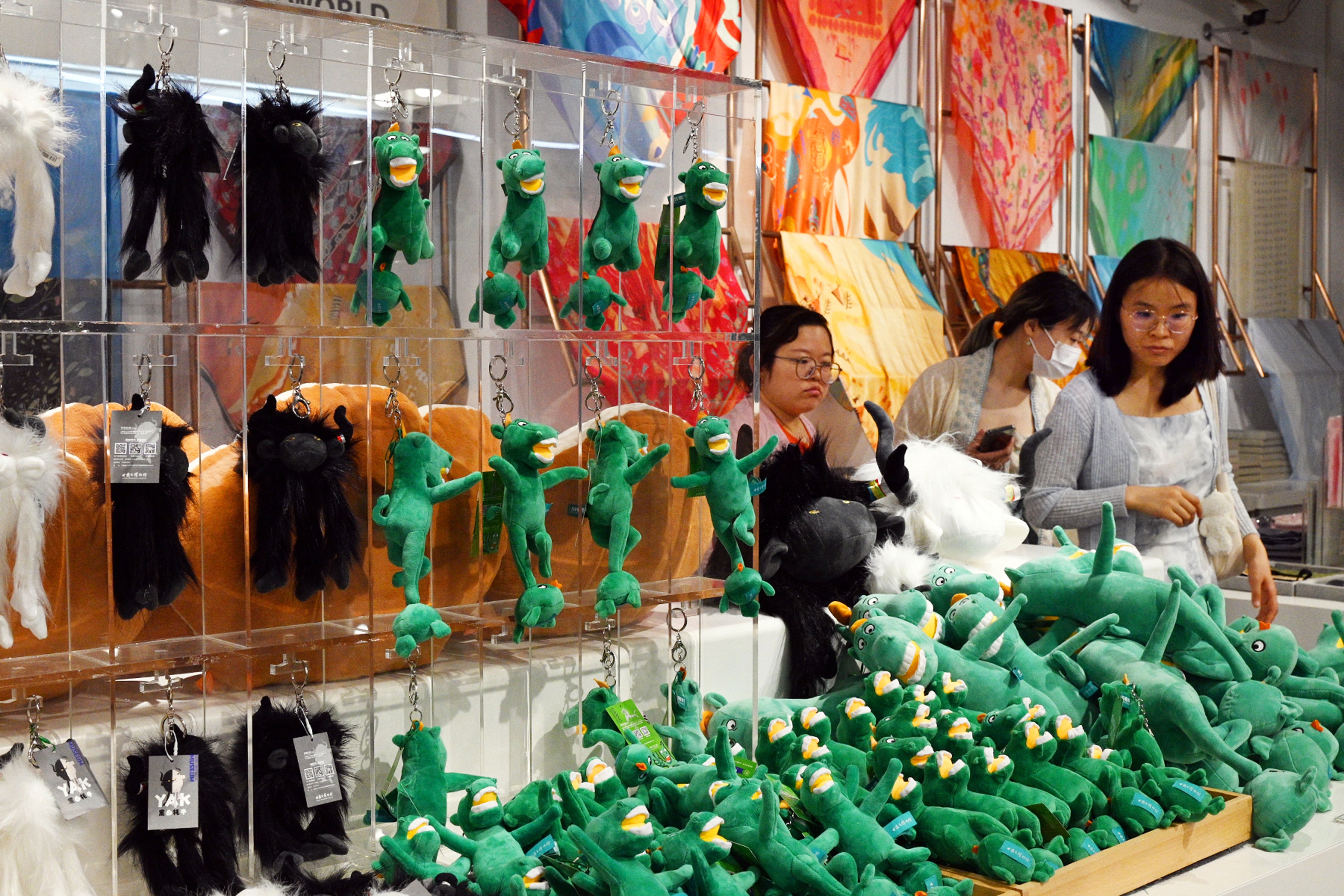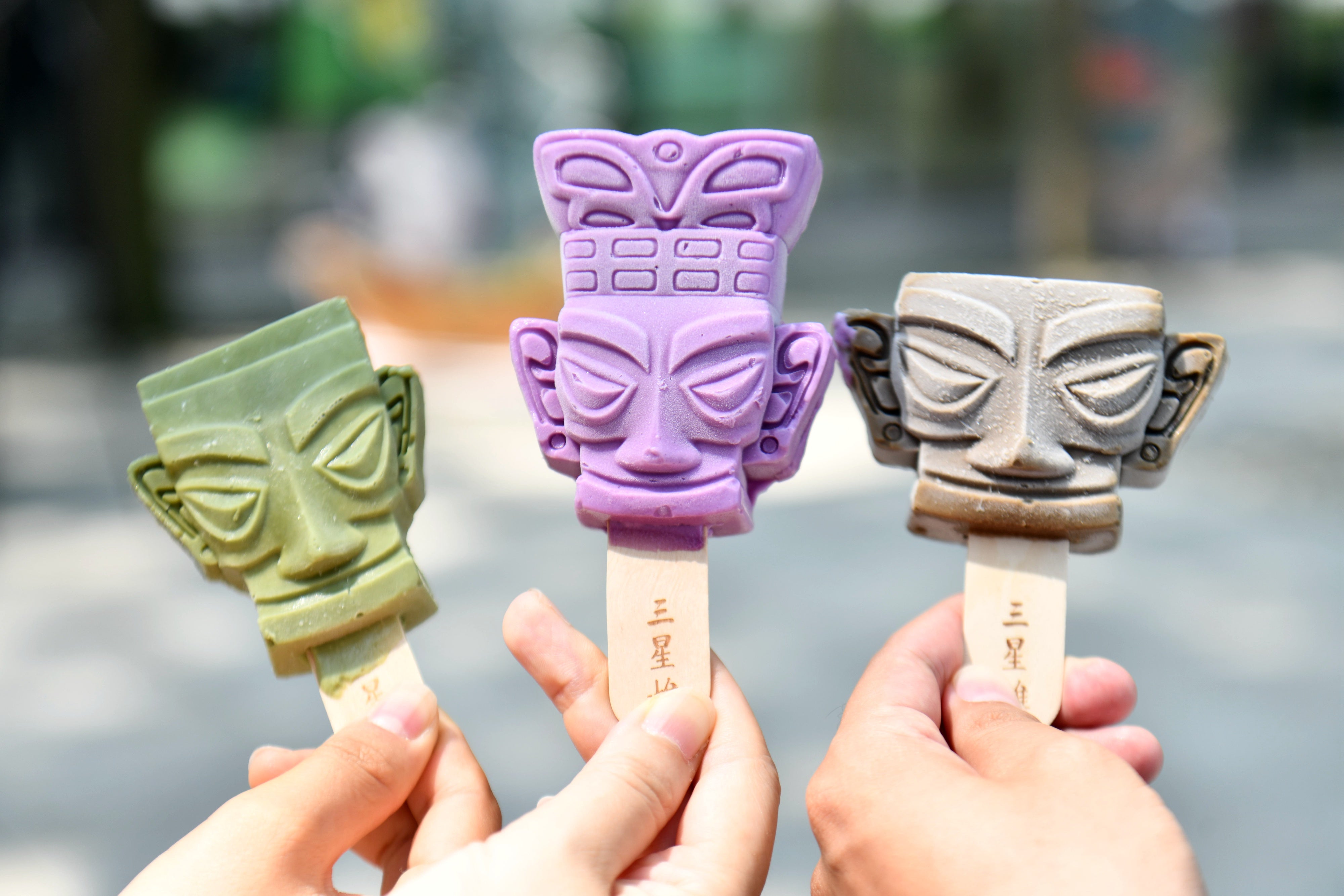Young people swell demand for creative cultural items
THE ARTICLES ON THESE PAGES ARE PRODUCED BY CHINA DAILY, WHICH TAKES SOLE RESPONSIBILITY FOR THE CONTENTS

When art designer Lu Xue decided to transform the inspiration she took from the renowned Tang Dynasty (618-907) painting Court Ladies Adorning Their Hair with Flowers into tangible art curios, they struck a major chord with museum patrons.
Her creations include butterfly-shaped rings, and bracelets and earrings featuring preserved flowers and natural stones of different hues. Since the items hit the market at the beginning of the year, visitors to the Liaoning Provincial Museum in Shenyang have been lining up to buy the items.
“When I laid my eyes on the precious ancient painting at the museum, I noticed that women in ancient times wore cut flowers as part of their attire. This inspired me to think about how we could apply fresh flowers to modern girls, allowing them to wear flowers in a different way,” said Lu, who used to be a floral artist.
The classic work by renowned artist Zhou Fang paints a vivid picture of the life of palace women who wore their hair styled into high, cloud-like buns, with fluffy “sideburns”. Between the buns are inserted flowers including Chinese peonies, lotuses, and hydrangeas. Lu carefully selected natural pink, blue and green stones and sealed dried flowers in them by using modern technology, giving the flowers an amber texture and a coloured glaze.

“This cultural and creative product not only brings cultural relics to life, but also allows more people to learn about China’s excellent traditional culture,” said Lu who is part of the cultural and creative team assembled by the museum last year.
To date, the team has developed hundreds of items — ranging from bookmarks, costumes, cosmetics and skincare products — which bear elements of cultural pieces at the museum. Last year, sales of those products reached 14 million yuan (£1.51 million), the museum said.
Cultural licensing and cross-industry collaboration have been thriving in recent years, taking the cultural and creative industries into a new era, said Dong Baohou, vice-curator of the Liaoning museum.
This new wave of cultural and creative products not only meets fashion demands but also highlights the significance of culture, and aligns well with the consumption preferences of the younger generation, Dong added.
Young consumers born in the 1990s and 2000s are becoming a driving force behind the consumption of museum-themed cultural and creative products, data from the online travel platform Mafengwo showed.
They have grown up with the internet and desire items that are “individual” and provide them with a special experience or knowledge. This demand has driven the continuous upgrade of such products, the platform said.
As a result, cultural and creative products have evolved from simple items like postcards and badges depicting museums. They now include creatively designed relic refrigerator magnets, and archaeology blind boxes, which have an element of surprise and mystery for buyers.
The fusion of museum culture and creativity not only promotes a diverse range of products, but also shows the immense market potential for related industries, experts said.
The market size of China’s cultural and creative products reached £12.53 billion in 2023, an increase of 13.09 per cent year-on-year, according to an industry report by the Beijing-based consultancy, the Intelligence Research Group.
The recent 2024 Cultural and Creative Industry Report released by the Mob research institute in Shanghai showed that a relatively complete industry chain for cultural and creative products has already taken shape in China. This chain is extensive, covering various related industries from creative design to product manufacturing, sales, and consumption, it pointed out.
Wu Liyun, a professor at the China Academy of Culture and Tourism at Beijing International Studies University, said the popularity of such products is based on the public’s growing interest in traditional culture.
Many products with innovative designs and unique shapes align with young people’s tastes. They can also serve as a bridge for the public to learn about the culture of a specific historical period, and thus expand cultural influence.

Bookmark popover
Removed from bookmarks